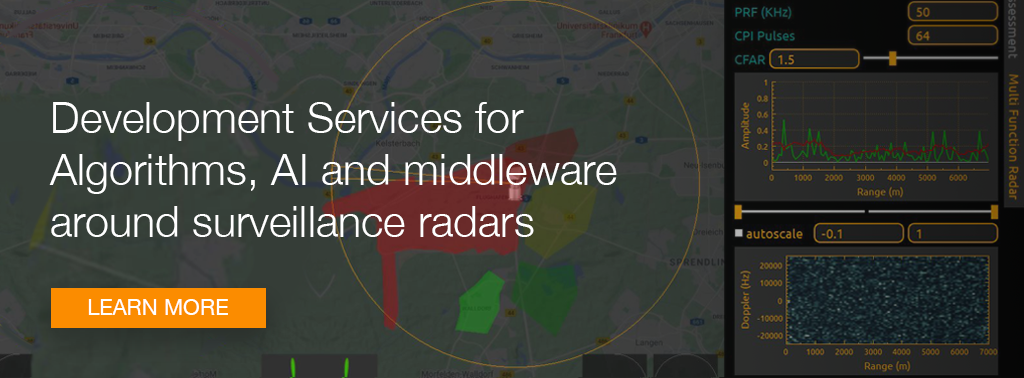Digital industrial platforms like those of General Electric, Siemens or Bosch are emerging. They start as the heart of a service-led Industry 4.0 manufacturing process. But they have the potential to become the heart of a platform-based, agile and highly innovative internet of things.
Intelligent sensors play a significant role, as they are the eyes of the IoT.
Industrial IoT Platforms
But let us first look at the platforms. Why are they so important?
They allow to collect and analyze data from an unlimited range of tools, machines, vehicles, sensors, remote databases etc. originating from an ecosystem of third party component and service providers.
These platforms are more than just a technical aggregator, more than a modern, modular SCADA or distributed control system, they are also a marketplace. Such a setting of services and customers around a two-sided market bares high potential for exponential growth, driven by network effects.
The borders between industrial and general IoT are blurred. The future will show whether different platforms will cater for the manufacturing and for the operating phase. Technically, there is no reason to separate them.
By design these platforms have a bigger scope of growth than classical human-centric platforms like e.g., the Apple App store. The reason: human centric stores are limited by the total amount of potential human customers. On the user side, the number of things in the IoT is countless.
The Power of IoT Data
Digital Industrial Platforms aggregate data from industrial assets and build on this data through smart services. Processes will become better, learning, agile, intelligent systems, pretty much as we know it from pure AI-based software.
The Transformation of Manufacturing
Gartner describes two axes of disruptive change in manufacturing:
- the transition to digital manufacturing
- the transformation of manufacturing business models
Transition to digital manufacturing
Gartner sees the alignment of operational technology, engineering technology and information technology the essential factor for sustainable growth. It will be more complex than the software based platforms as software and hardware have to align with the platform architecture.
Transformation of manufacturing business models
The first decision to play for technology companies is:
will you be a platform or an ecosystem player?
Platform Players
Off course the potential of profits for platforms will be incomparably bigger. But organizations should be cautious as most of the platforms fail. MIT Professor John Sterman substantiated this mathematically in his groundbreaking work on dynamic markets. But also statics show that in most segments, only few, sometimes only one platform survives. In many segments, the platform is called Amazon.
The initial success of a platform depends on its base-value proposition. In other words: does it have enough to offer to attract a sufficiently big amount of users to the platform to make it operational in a sustainable way. Then exponential growth will be defined by the network attractiveness, which depends on
- the amount of users
- the segment specific critical mass of users
- the sensitivity to the mass of users
- amplifying factors, triggering the growth of the user base
Looking at the interplay of parameters, network attractiveness can be defined as the exponential function:
`sf "Network Attractiveness Ai" = Exp ( sf "amplification" xx sf "sensitivity" xx sf "amount of users" / sf "critical mass of users")`
The full explanation of network attractiveness can be found in my article:
Cloud Services: Network Attractiveness and the Secrets of Viral Growth
Ecosystem Players
Becoming an ecosystem-member is less risky. The technology company can preselect successful platforms and exclude the risk of riding a dead horse. It will then be enough to provide a solution that stands out from its competitors in a field of application big enough to generate sustainable profits.
Player can be pure hardware providers, pure software providers or a supplier of an integrated hardware-software solution.
Eco-system driven, self-organizing emergent systems around two-sided markets
The complete interplay of platform (two-sided market), ecosystem of suppliers and users will create a self organizing and emergent system.
- self-organizing means it organizes over time, driven by customer demand and competitors' or partners' offerings
- emergent means the system will organize over scale.
Self-organization and emergence have an impact on the platform level, which we call meta-effect. Many users and providers will create patterns and clusters of offerings.
What SkyRadar can do for you
SkyRadar has been developing cloud-based radar applications for more than a decade. Cooperation and research with platform operators and security companies makes SkyRadar an experienced and trustworthy partner for the development of technical solutions and their business models around intelligent radars and lidars in the internet of things.
Contact us to discuss your project!
The author, Ulrich Scholten is cofounder of SkyRadar. He has been working on internet platforms since the early 2000s. Ulrich holds a PhD in information technology and owns several patents on cloud-based sensors. His research is regularly published in highly rated journals and conference papers. Dr. Scholten publishes on cloud computing, (radar-based) sensing and the IoT. From 2008 - 2014, he was associated research scientist at the Karlsruhe Service Research Institute (KSRI), a partnership by KIT and IBM, where he researched network effects around web-platforms together with SAP Research.
References and further reading
- Cloud Services: Network Attractiveness and the Secrets of Viral Growth (2017), by Ulrich Scholten
- Digital Industry Platforms (2021), by Tobias Pauli, Erwin Fielt and Martin Matzner
- A Taxonomy of Industrial IoT Platforms' Architectural Features (2021), by Laurin Arnold, Jan Jöhnk, Florian Vogt and Nils Urbach
- Manufacturing Digital Transformation and Innovation Primer for 2020 ( 2020)
by Ivar Berntz and Ellen Eichhorn at Gartner, Inc. - Platform-based Innovation Management: Directing External Innovational Efforts in Platform Ecosystems (2011), by Simone Scholten & Ulrich Scholten
- Composite Solutions for Consumer-Driven Supply Chains (2010), by Simone Scholten, Ulrich Scholten and Robin Fischer. In: Bogaschewsky R., Eßig M., Lasch R., Stölzle W. (eds) Supply Management Research. Gabler




